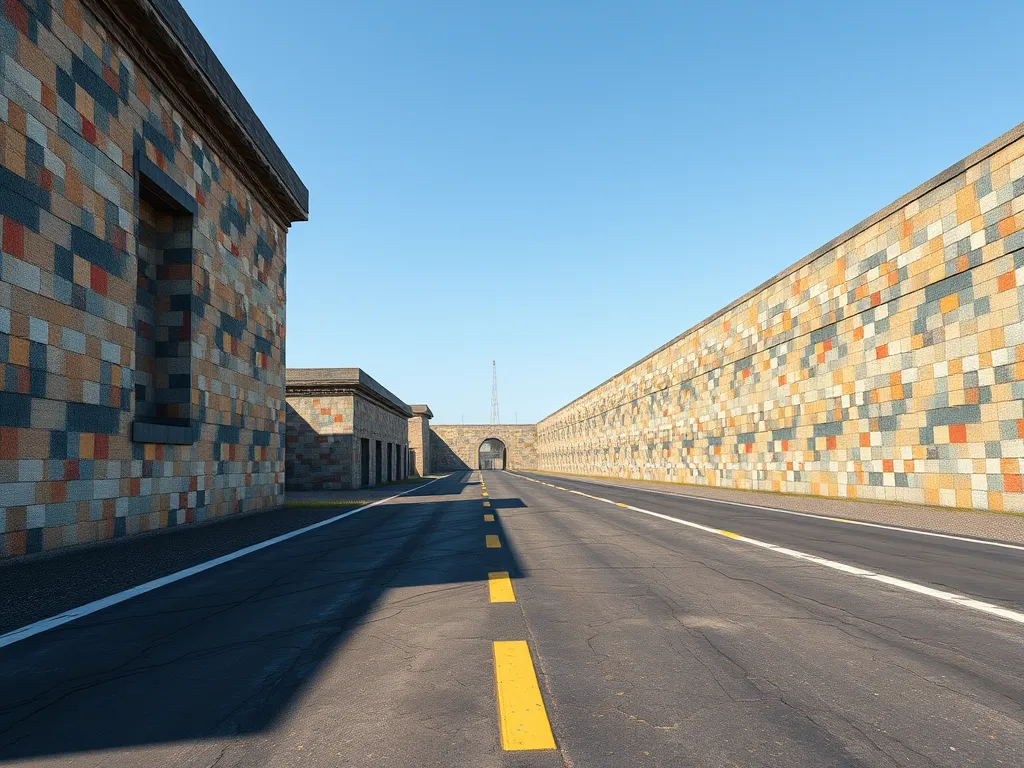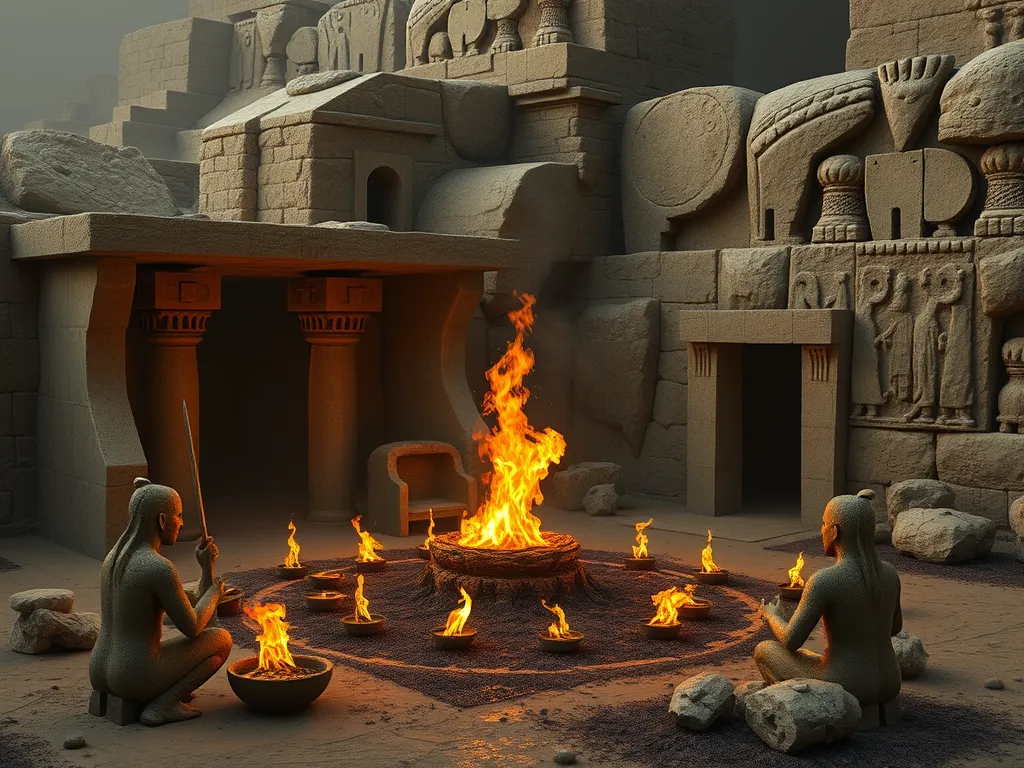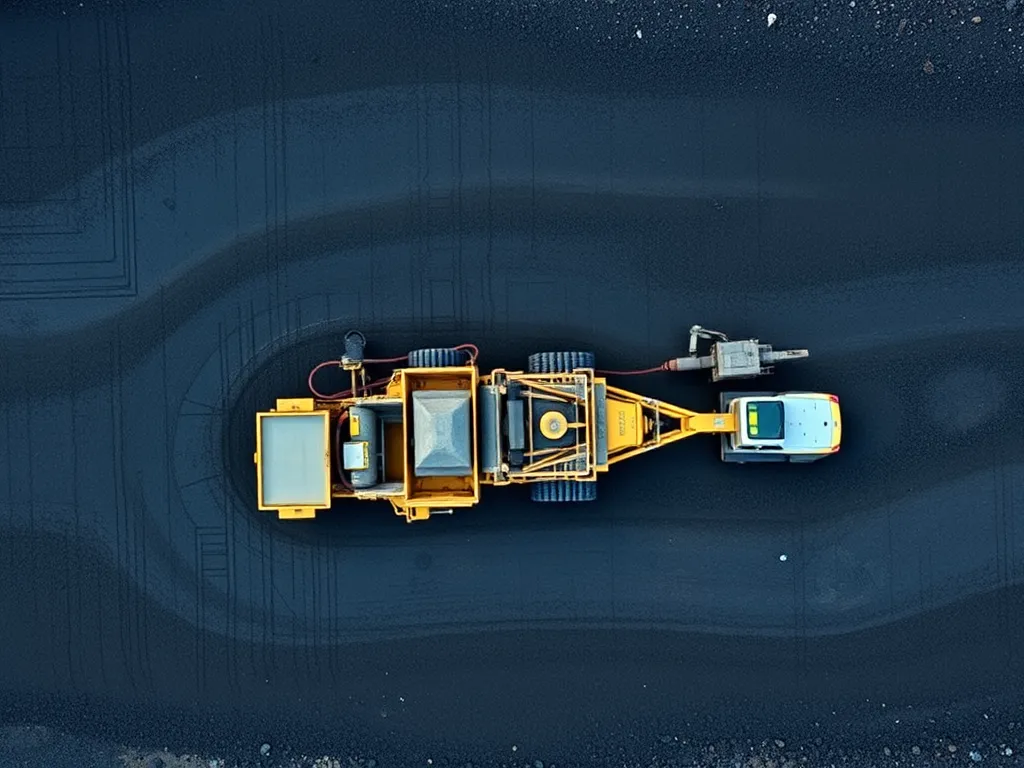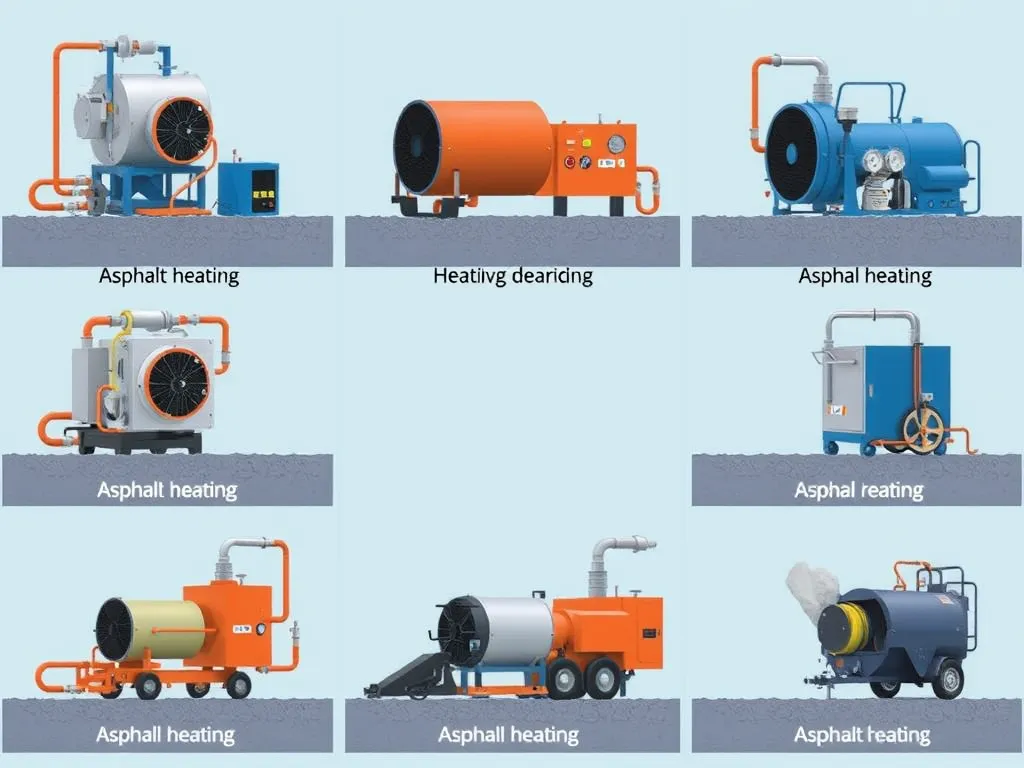The Ancient Roots Of Asphalt: From Ziggurats to Mummies
Published on: April 9, 2025 | Last Updated: April 14, 2025
Written By: George Voss
Asphalt history in ancient civilizations began over 5,000 years ago with natural seepages of bitumen (a sticky petroleum substance). Early societies used this material for waterproofing boats, sealing tombs, and binding bricks in structures like Mesopotamian ziggurats. Unlike modern asphalt mixes containing crushed stone, ancient versions relied on raw bitumen blended with sand or reeds. Its waterproof qualities made it vital for preserving mummies in Egypt and stabilizing roads in Babylon by 625 BC.
This article uncovers how ancient cultures shaped asphalt’s legacy. Explore its use in pyramid construction, Roman harbors, and biblical narratives. Learn how 7th-century Babylonians heated bitumen to 300°F for mortar, why Dead Sea asphalt preserved scrolls for millennia, and how pre-Columbian tribes waterproofed canoes. From ritual symbolism to engineering feats, we map asphalt’s journey through six key civilizations.
Contents
- Early Origins Of Asphalt Use
- Ancient Applications Of Asphalt
- Asphalt in Major Ancient Civilizations
- Asphalt in Religious and Cultural Contexts
- Technological Advancements in Ancient Asphalt Use
- Archaeological Evidence Of Ancient Asphalt
- Environmental Impact in Ancient Times
- FAQ: Ancient Asphalt History
- Closing Thoughts
- Useful References for You:
Early Origins Of Asphalt Use
Asphalt’s story begins long before modern roads. Ancient civilizations tapped into this resource through natural deposits, shaping early human innovation.
Natural Occurrence and Discovery
Early humans encountered asphalt as a sticky black substance seeping from the ground. These surface deposits became critical for survival and construction.
Geological Formation of Asphalt in Ancient Times
Asphalt formed when crude oil migrated upward through geological fissures. Exposure to air and heat evaporated lighter oils, leaving behind dense bitumen. This process created deposits in regions like Mesopotamia’s Hit-Abū Jir fissures and the Dead Sea Basin.
Key ancient asphalt sources:
| Location | Formation Process | Ancient Name |
|---|---|---|
| Dead Sea | Oil seeps through salt domes | “Slime pits” (Genesis 14:10) |
| Trinidad | Volcanic activity mixed oil + clay | “La Brea” (The Tar) |
| La Brea Tar Pits (California) | Fault-line petroleum leaks | Used by Chumash tribes |
Deposits hardened at 50-100°C temperatures, creating workable slabs. Civilizations near tectonic zones – like Babylonians near Euphrates oil seeps – harvested asphalt for waterproofing bricks and mortar.
This ready supply of natural asphalt set the stage for its widespread adoption. From sealing tombs to building cities, ancient societies transformed this geologic oddity into a cornerstone of early engineering.
Next, we’ll examine how these raw materials shaped iconic structures – from ziggurat staircases to mummy wrappings.
Ancient Applications Of Asphalt
Asphalt served as a key tool for early builders. Its sticky, water-proof traits made it vital for big projects. From tombs to temples, ancient groups found smart ways to use this tough material.
Waterproofing and Construction
Stopping leaks was a top use. Asphalt sealed walls, floors, and roofs. It kept water out and structures strong for centuries.
Mesopotamian Ziggurats and the Hanging Gardens
Builders in Mesopotamia (now Iraq) mixed asphalt with reeds and bricks. The ziggurat at Ur had asphalt layers to block rain. Texts say the Hanging Gardens used asphalt-coated bricks to guard soil from rot. Workers hauled asphalt from seepages near Hit, a site still linked to Iraq’s oil fields today.
Egyptian Mortuary Practices and Tomb Sealing
Egyptians called asphalt “mumiya” for its embalming role. They lined mummy wraps with it to slow decay. Tombs at Saqqara show asphalt seals on stone slabs. These kept air and moisture out, saving art and bodies for 3,000+ years.
Adhesive and Preservation Uses
Asphalt glued stones, bricks, and wood. Its grip held cities together. It also saved goods from spoiling in damp places.
Binding Materials in Babylonian Structures
Babylon’s walls used asphalt as mortar. Builders heated it, mixed with sand, and laid bricks in tight rows. The Ishtar Gate’s famed tiles may have relied on asphalt underlay. Roads like the Processional Street had asphalt joints to prevent cracks from carts and floods.
From tombs to temples, asphalt shaped early urban life. Next, we’ll see how major groups like Rome and Egypt scaled these methods for grand projects.

Asphalt in Major Ancient Civilizations
From waterproofing temples to sealing royal tombs, ancient civilizations pioneered asphalt applications still relevant today. Three cultures stand out for their technical mastery of this versatile material.
Mesopotamian Civilization
Mesopotamia’s asphalt use began 8,000 years ago. Bitumen deposits near Hit (modern Iraq) fueled innovations in urban development.
Asphalt in Urban Infrastructure (6000 BC)
Builders in Ur and Babylon blended bitumen with sand to create waterproof bricks. Archaeologists found asphalt layers in the Ishtar Gate (575 BC), protecting glazed tiles from erosion. The Euphrates River embankments used 40 cm-thick asphalt mortar to prevent flooding. Tablets from Nineveh detail bitumen prices: 1 shekel bought 12 liters in 2000 BC.
Ancient Egypt
Egyptians sourced asphalt from the Dead Sea (called “Jew’s pitch”) for sacred and structural purposes. The Ebers Papyrus (1500 BC) documents its medical uses.
Mummification and Pyramid Construction
Embalmers used asphalt to seal mummy linen, with 5-10% bitumen content in resin mixtures. The Pyramid of El-Kula (2600 BC) contains asphalt-bonded limestone blocks. Workers heated bitumen to 150°C for mortar, creating joints that withstand 50 MPa pressure. Recent scans show asphalt layers in Khufu’s pyramid still intact after 4,500 years.
Greco-roman Innovations
Greek engineers called asphalt “asphaltos” (secure). Roman builders scaled its use across their empire.
Roads and Harbor Sealants
The Appian Way (312 BC) used crushed stone with 8% asphalt binder. Roman ships coated hulls with Pozzuoli asphalt from Mount Vesuvius. Vitruvius’ De Architectura specifies harbor sealant recipes: 3 parts asphalt, 1 part lime. Excavations at Ostia Antica reveal asphalt-treated docks resisting saltwater corrosion for 2 millennia.
The versatility of asphalt extended beyond engineering into sacred rituals and cultural identity. Its role in ancient belief systems reveals deeper symbolic meanings…
Also See: Comparison Of Durability Tests for Asphalt
Asphalt in Religious and Cultural Contexts
Across asphalt ancient civilizations, this material held more than structural value. It wove itself into spiritual narratives and cultural identity, shaping rituals from Mesopotamia to the Nile Delta.
Biblical References to Asphalt
The history of asphalt appears in sacred texts. Ancient Hebrew and Christian scriptures mention “bitumen” 15 times, tying it to pivotal events. Its waterproofing strength made it a metaphor for divine protection.
Use in the Book of Exodus and Tower of Babel
Exodus 2:3 describes Moses’ mother coating his basket with “kopher” (bitumen) to float safely on the Nile. Genesis 11:3 credits asphalt ancient use in the Tower of Babel’s mortar: “They used brick instead of stone, and bitumen for mortar.” Archaeologists confirm Babylonian ziggurats used 40-80% bitumen in adhesives.
| Biblical Event | Asphalt Role | Modern Evidence |
|---|---|---|
| Exodus Basket | Waterproofing | Dead Sea bitumen matches Exodus-era samples |
| Tower of Babel | Mortar binder | Bitumen residues found in Mesopotamian ruins |
Ritualistic and Symbolic Significance
In asphalt ancient civilizations, the material symbolized permanence and connection to the earth. Egyptian embalmers used 12-15 lbs of bitumen per mummy, believing its preservative qualities safeguarded souls. Persian fire temples lined altars with asphalt to contain sacred flames.
Mesopotamians viewed seepages near Hit (modern Iraq) as gifts from the sun god Shamash. Ritual texts from 1800 BC detail bitumen offerings to Ishtar, linking its flammable nature to purification rites. The Ebla tablets note “stone that burns” priced at 1 silver shekel per liter – equal to a month’s wages.
From floating prophets to sealing tombs, asphalt shaped humanity’s spiritual landscape. These practices laid groundwork for later innovations in material science. Up next: how ancient engineers refined raw bitumen into enduring infrastructure.

Technological Advancements in Ancient Asphalt Use
Ancient societies transformed raw asphalt into advanced building materials through evolving methods. These innovations laid the groundwork for modern paving and construction.
Early Refinement Techniques
By 2000 BC, Mesopotamian builders developed methods to process natural bitumen. They separated impurities by boiling crude asphalt in clay pots, creating a cleaner binder for structures.
Heating and Mixing Methods
Workers heated bitumen to 300°F to liquefy it, then blended it with sand, lime, or crushed ceramics. This mix enhanced durability for roads like Babylon’s Processional Way. The Hanging Gardens relied on layered asphalt and reed mats to prevent water seepage. Mix ratios varied: 60% aggregate to 40% bitumen formed weather-resistant mortar.
Spread to Europe
Roman engineers adopted asphalt technology after encountering Middle Eastern and Greek practices. They integrated it into their vast infrastructure network, advancing hydraulic engineering.
Introduction via Roman Engineering
Rome’s Appian Way (312 BC) used hot asphalt mixtures to stabilize roadbeds. Engineers waterproofed aqueducts with bitumen-lime composites, achieving 90% efficiency in water transport. Pompeii’s streets featured compacted asphalt layers 4-6 inches thick, designed to handle heavy chariot traffic. These techniques spread across Gaul and Britain by 100 AD.
These material breakthroughs left physical traces that archaeologists now study to decode ancient engineering wisdom. Next, we examine the artifacts that reveal asphalt’s role in early societies.
Archaeological Evidence Of Ancient Asphalt
Excavations across the globe reveal asphalt’s role in early societies. From scroll preservation to waterproofing, physical artifacts prove its widespread adoption long before modern industry.
Key Discoveries and Artifacts
Archaeologists pinpoint asphalt use through residue analysis, tool marks, and written records. Two standout examples show its adaptability across continents and cultures.
Dead Sea Scroll Preservation
Bitumen-coated jars protected the Dead Sea Scrolls for over 2,000 years. Discovered near Qumran in 1947, these texts survived due to asphalt’s moisture-blocking properties. Researchers found bitumen traces on pottery fragments dating to 300 BCE–100 CE, confirming its role in safeguarding sacred writings.
Pre-Columbian Waterproofing in the Americas
Mesoamerican cultures mixed asphalt with plant resins to create chapopote—a durable sealant. At Tenochtitlán’s Templo Mayor (built 1325 CE), workers lined reservoirs with 10 cm-thick asphalt layers. Maya engineers in Tikal used similar methods for canal systems, reducing water loss by 70% compared to untreated channels.
These findings highlight asphalt’s cross-cultural value. Next, we examine how ancient societies balanced resource extraction with ecological limits.

Environmental Impact in Ancient Times
Old groups using asphalt thought about how their actions shaped lands. With no modern tools, work with this material had limits. But old ways still left a mark on local spots.
Sustainable Extraction Practices
Ancient asphalt came mainly from natural pits and tar sands. Groups in Babylon and Assyria took bitumen from spots like Hit’s springs or the Dead Sea. Manual gathering with rafts, baskets, and hand tools cut harm to grounds. Records from 3000 BC show Sumerians taking only what was vital for brick mortar or boat caulking, avoiding big digs. This kept supply stable for centuries without draining natural stockpiles.
Ecological Adaptations
Builders mixed asphalt with local stuff to fit surroundings. Along the Tigris, workers added sand to bitumen for flood-proof bricks, stopping toxic runoff. In Egypt’s tombs, palm fiber blended with asphalt stopped cracks in burial chambers. Roman roads used slopes and gravel layers to let rain drain, guarding against soil washouts. Such tricks kept old projects standing while shielding farms and rivers nearby.
Proof of old asphalt’s lasting mark sits in dirt and items found today. Up next: how digs uncover clues of its role in shaping history.
FAQ: Ancient Asphalt History
What Was the Primary Ancient Use Of Asphalt?
The primary ancient use of asphalt was for waterproofing and construction. Civilizations utilized its sticky and water-resistant properties to seal structures, including tombs and ziggurats, and to create strong mortar for binding materials.
How Was Asphalt Utilized in Biblical Times?
In biblical times, asphalt (often referred to as bitumen) was used for waterproofing, as seen in the story of Moses’ basket in the Book of Exodus. It was also used in the construction of the Tower of Babel, where it served as a binder for bricks.
When Did Europe Adopt Asphalt Technology?
Europe adopted asphalt technology primarily during the Roman Empire, around 200 BC. Roman engineers integrated asphalt into their infrastructure, utilizing it for road construction, aqueduct sealing, and harbor enhancements, spreading these techniques across their vast territories.
What Symbolic Meanings Did Asphalt Hold in Ancient Cultures?
Asphalt held significant symbolic meanings in various ancient cultures, often representing permanence and a connection to the earth. In ancient Egypt, it was used in embalming rituals, believed to preserve not only the physical body but also the soul. In Mesopotamia, it was considered a divine gift, linked to purification rituals and offerings to deities.
What Archaeological Evidence Supports Asphalt Use in Ancient Civilizations?
Archaeological evidence supporting asphalt use includes the discovery of bitumen-coated artifacts such as the Dead Sea Scrolls, which were preserved due to asphalt’s moisture-blocking properties. Additionally, sites in the Americas reveal that pre-Columbian cultures utilized asphalt for waterproofing canals and reservoirs, confirming its widespread application across different civilizations.
How Did Ancient Societies Manage Asphalt Extraction Sustainably?
Ancient societies managed asphalt extraction sustainably by using only what was necessary and gathering it from natural deposits. Techniques developed during this time, such as manual collection and careful resource management, ensured that supplies did not deplete rapidly, allowing for sustained use over centuries.
Closing Thoughts
Asphalt has played a pivotal role throughout history, showcasing its versatility and durability in ancient civilizations. From the waterproofing techniques in Mesopotamia to its use in Egyptian tombs, asphalt has been a crucial material in construction, preservation, and cultural practices. The evidence of its applications provides insight into the innovative spirit of our ancestors and their ability to manipulate natural resources for practical use.
With advancements in technology, the legacy of these ancient practices continues to influence modern materials and construction techniques. As we explore the historical significance of asphalt, we gain a deeper appreciation for its impact on our infrastructure and culture.
For more information on asphalt and its applications, make sure to check out Asphalt Calculator USA.


